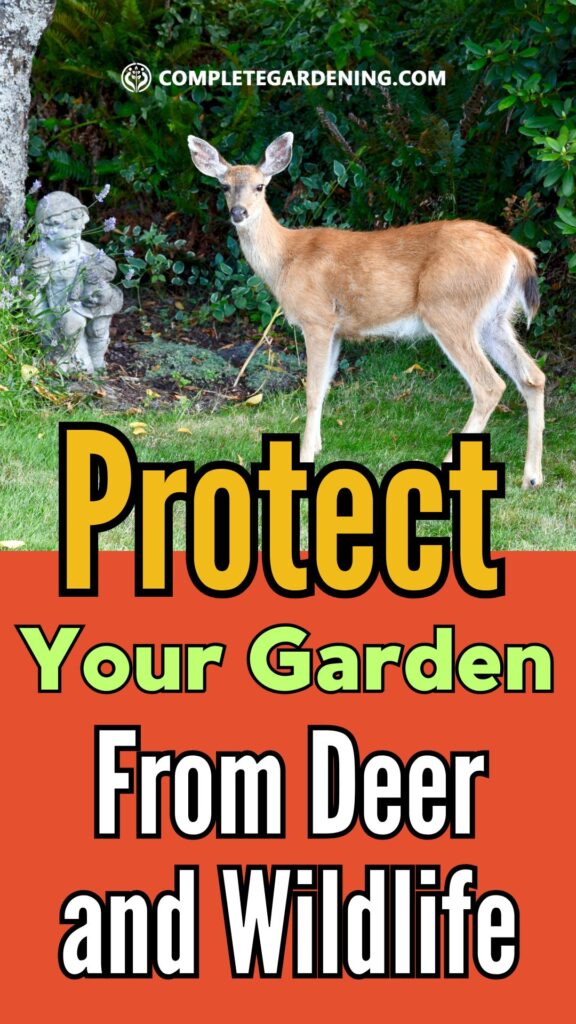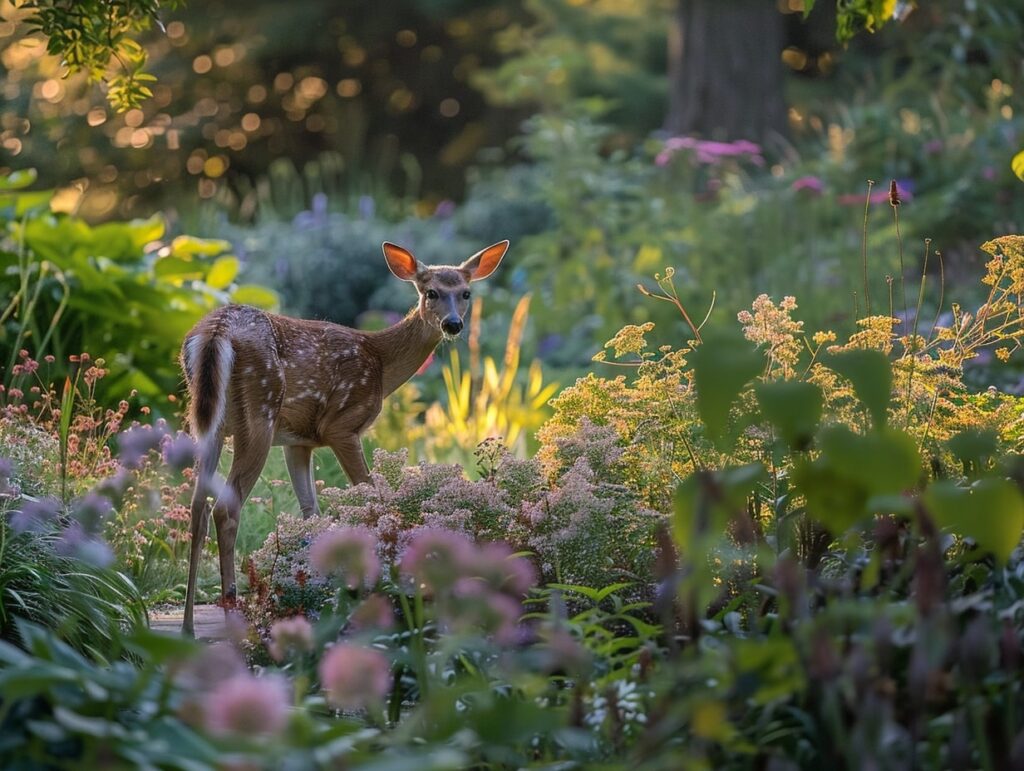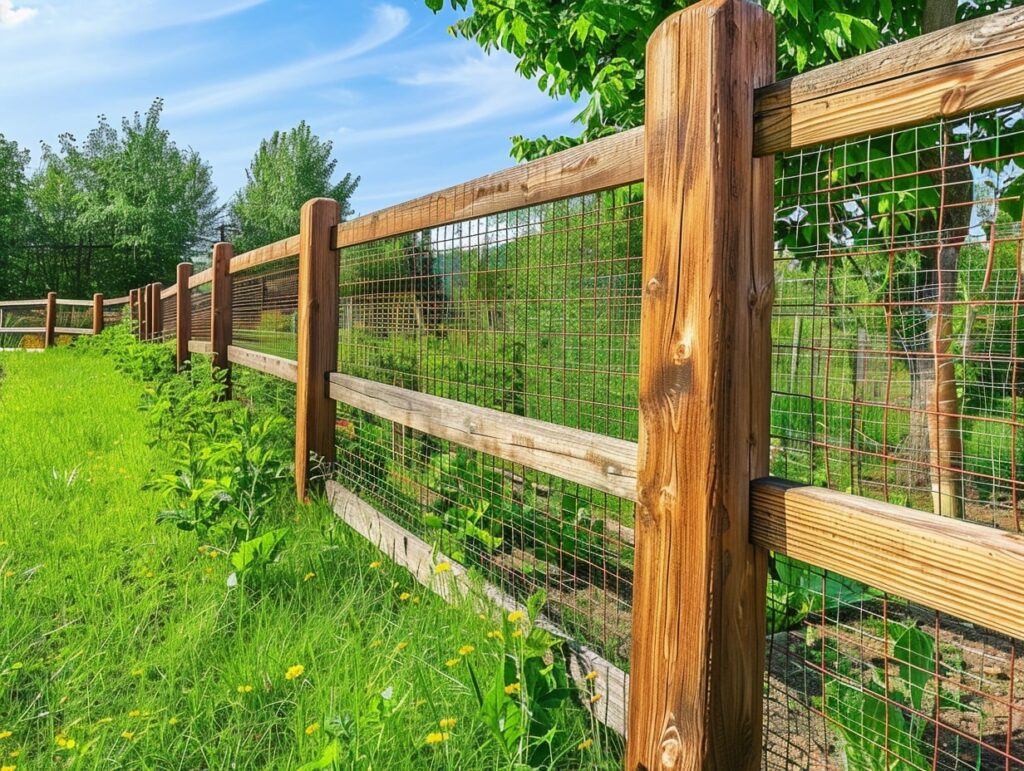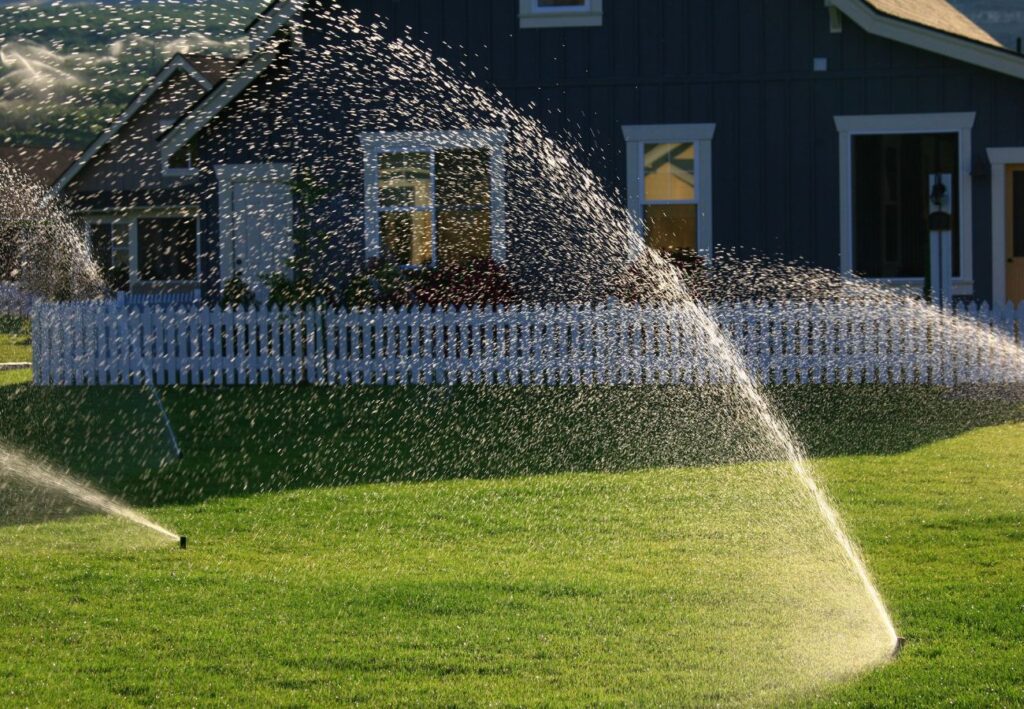Is your garden, your cherished sanctuary, being invaded by deer and other wildlife, turning your hard work into their personal buffet? It’s a common and frustrating problem.
But fear not—there are effective, humane solutions that can protect your garden and keep it thriving.
You want a garden that flourishes, free from the nightly grazes of unwelcome visitors. This blog offers six practical ways to deter deer and other wildlife from your garden.
From natural repellents to smart landscaping techniques, these proven methods will keep your greenery safe and beautiful.
Taking action to protect your garden doesn’t have to be complicated or costly. Whether you’re dealing with a curious deer or a hungry rabbit, these tips will help ensure your garden remains lush and vibrant.
Don’t let your hard work go to waste—discover how to shield your plants effectively and maintain the sanctuary you’ve worked so hard to create.
Understanding Deer Behavior
To effectively deter deer, it helps to learn about their feeding habits and movement patterns. Understanding these aspects will allow you to devise strategies to keep your garden safe.
The Feeding Habits of Deer
Deer are selective feeders. They generally prefer plants with soft foliage, fruits, and certain vegetables.
Common Deer Favorites:
- Roses
- Tulips
- Lettuce
Deer-Resistant Plants:
- Marigolds
- Daffodils
- Lavender
During different seasons, their diet shifts based on what’s available. In spring and summer, they often consume tender, nutrient-rich plants.
As fall approaches, their diet changes to include more woody plants and bark. This shift is crucial in preparing for winter when food is scarce.
Deer Movements and Patterns
Deer exhibit distinct movement patterns influenced by food availability, weather, and breeding cycles. They usually follow the same trails, forming well-worn paths through woods and fields.
Key Movement Insights:
- Peak Activity: Early morning and late afternoon
- Seasonal Shifts: More active in spring and fall
In urban areas, deer often adapt, becoming more nocturnal to avoid human activity. Observing these patterns can help you set up effective deterrents.
For example, if deer are most active at dawn, activating sprinklers or noisemakers at these times can effectively keep them away from your garden.
Physical Barriers and Fencing Solutions
Using physical barriers and specially designed fencing can provide effective protection against deer and other garden-invading wildlife. By creating an appropriate deterrent, you can ensure your garden remains secure and flourishing.
Types of Fences for Deer Deterrence
Electric Fences: These give a mild shock upon contact, teaching animals to stay away. They must be properly installed and maintained to ensure effectiveness and safety.
Wire Mesh Fences: Often made from heavy-gauge materials, these are durable and withstand harsh weather. Ensure the mesh holes are small enough to prevent animals from squeezing through.
Wooden Fences: Aesthetic and effective, wooden fences provide a solid barrier. Deer can’t see through them, making them less likely to attempt a jump.
Plastic Netting: Lightweight and cost-effective, plastic netting is easy to install but may not withstand aggressive wildlife. Ideal for temporary barriers or additional layering over existing fences.
Effective Height and Depth Strategies
Height Considerations: Deer are proficient jumpers. Install fences at least 8 feet high to prevent them from leaping over. Single-strand electric fences can be effective at 6 feet if properly maintained.
Depth Considerations: Some animals may dig underneath. Burying mesh or adding an underground barrier at least 6 inches deep can deter digging animals like rabbits and groundhogs.
Angled Fencing: An outward-slanting fence can confuse deer, making them less likely to attempt a jump. This structure also discourages climbing animals from scaling the fence.
Double Fencing: Installing two shorter fences a few feet apart can confuse and deter deer. They find it challenging to jump both fences, reducing the chance of garden intrusion.
Natural Repellents and Plant Choices
Choosing specific plants and creating homemade repellents can be effective strategies to keep deer and other wildlife at bay. These methods focus on utilizing natural elements that animals find unappealing.
Plants That Discourage Deer
Certain plants can act as a natural deterrent to deer. Deer tend to avoid plants with strong scents, rough textures, or sharp thorns.
Examples include:
- Lavender: Its strong aroma is off-putting to deer.
- Catmint: Fragrant and hardy, it’s an excellent choice.
- Rosemary: Both aromatic and tough, making it less palatable.
- Thyme: Strong scent and small leaves deter browsing.
Incorporating these plants into your garden helps create a less inviting environment for deer. Plant them around the perimeter or interspersed among other plants to enhance their deterrent effect.
Homemade Repellent Recipes
Creating natural repellents at home can be an effective and eco-friendly way to protect your garden.
Simple recipes include:
- Egg Spray: Mix 2 beaten eggs with a gallon of water. Spray on plants to deter deer with an unpleasant scent.
- Garlic and Pepper Spray: Blend 3 cloves of garlic and a hot pepper in a quart of water. Strain and spray around the garden.
- Soap Shavings: Grate a bar of strong-scented soap and sprinkle the shavings around your plants.
Apply these repellents regularly, especially after rain, to maintain their effectiveness. Being consistent with these methods will help keep deer and other wildlife from devouring your plants.
Scare Tactics and Deterrent Devices
Using motion-activated devices and auditory or visual scare devices can effectively keep deer and other wildlife away from your garden.
Motion-Activated Solutions
Motion-activated devices detect movement and respond to scare away animals. Sprinklers can be highly effective; when triggered, they release a sudden burst of water that startles deer and other pests.
These devices are often available at garden centers and can be set up easily.
Another option is using motion-activated lights. These lights flash or turn on when movement is detected, making wildlife feel exposed and uncomfortable. Solar-powered versions are convenient as they don’t require wiring.
Ultrasonic repellents emit high-frequency sounds when triggered. These sounds are unpleasant to animals but are inaudible to humans, ensuring a peaceful environment for you while keeping critters at bay.
Auditory and Visual Scare Devices
Auditory scare devices often use sounds that mimic predators or other alarming noises. Noise-making devices like air horns or radios can be effective. Sometimes, rotating the sounds can prevent animals from getting used to them.
Reflective objects, such as aluminum foil strips or old CDs, can create visual disturbances. They catch the light and move with the wind, making animals wary of approaching.
Scarecrows are classic but can be made more effective with modern twists. Adding reflective tape or old clothes that move in the wind can increase their ability to scare away wildlife. Looking into rotating or motorized options can add an extra level of deterrence.
Combining these methods generally boosts their effectiveness.
Strategic Gardening and Landscaping
Plant certain herbs and flowers that are known to repel deer. Examples include lavender, rosemary, and marigolds. These not only keep deer at bay but also add color and fragrance to your garden.
Use raised beds or containers for vulnerable plants. This makes it harder for wildlife to reach your vegetables and flowers. Raised beds also allow for better control of soil and moisture conditions.
Create barriers using hedges or fencing around your garden. Wire mesh or chicken wire can be effective. Keep the fence at least 8 feet tall to prevent deer from jumping over. A double fence line also works well.
Plant thorny or prickly bushes along the perimeter of your garden. Bushes like holly, barberry, and roses can deter animals due to their discomforting textures.
Implement water features like ponds or fountains. The sound of running water can make animals uneasy and less likely to wander into your garden.
Multilevel gardening can confuse and deter deer. Planting tall plants in the back, medium-height plants in the middle, and short ones in the front can create a visual barrier that discourages them from entering.
Companion planting is another effective method. Planting species that deer dislike near those they do like can help protect your favorite crops. For example, intersperse garlic or onions among your flowers and vegetables.
Consider decoy plants. Plant species that are more attractive to deer away from your main garden area. This can lure them away and protect your primary garden.
Protecting your garden from deer and other wildlife is achievable through a combination of understanding animal behavior, using physical barriers, and employing natural repellents.
By incorporating specific plants, homemade deterrents, and strategic landscaping, you can maintain a beautiful and thriving garden. These methods not only keep your garden safe but also ensure an eco-friendly approach to wildlife management.
Implement these effective strategies to enjoy a lush and productive garden without the disruption of unwanted visitors.









